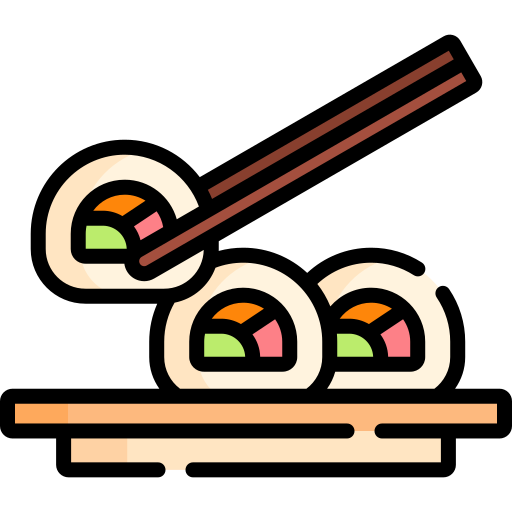Have you ever wondered what an octopus is called in Japanese? Or how to say “shark” if you’re visiting an aquarium in Tokyo? The fascinating world of Japanese sea creatures combines linguistic beauty with Japan’s deep cultural connection to the ocean. As an island nation surrounded by rich waters, Japan has developed specific names for countless marine species, many of which appear in their cuisine and folklore.
In this comprehensive guide, we’ll dive into the Japanese names for 30 popular sea creatures, complete with pronunciation guides, cultural insights, and practical usage. Whether you’re planning a trip to Japan, studying the language, or simply curious about marine life in Japanese culture, this guide will enhance your understanding and vocabulary.
Want to learn Japanese faster?
Book a free 15-minute call to create your personalized study plan. Get expert tips, guidance, and answers to all your questions. One-on-one!
Why Learning Japanese Sea Creature Names Is Valuable
Japan’s relationship with the ocean runs deep. From traditional fishing communities to world-renowned seafood cuisine, marine life is woven into the fabric of Japanese culture. Learning these terms will help you:
- Navigate Japanese seafood markets and restaurant menus
- Understand conversations about marine life when visiting aquariums in Japan
- Appreciate cultural references in anime, manga, and literature
- Expand your Japanese vocabulary with practical, everyday terms
As we explore each sea creature, we’ll include not only the Japanese name but also how to use these terms in context—giving you confidence in real-world situations.
Common Fish and Marine Mammals in Japanese
マグロ (Maguro) – Tuna
Tuna holds a special place in Japanese cuisine, particularly in sushi and sashimi. The most prized part, the fatty belly portion called 大トロ (ō-toro), can command impressive prices at Tokyo’s famous Tsukiji and Toyosu fish markets.
Example sentence: 「今日の夕食はマグロの刺身です。」 Kyō no yūshoku wa maguro no sashimi desu. “Today’s dinner is tuna sashimi.”
サケ (Sake) – Salmon
While “sake” is also the word for rice wine in Japanese, context makes it clear when referring to this popular fish. Salmon is widely enjoyed in Japan, whether raw in sushi or grilled with salt.
Example sentence: 「サケは栄養価が高い魚です。」 Sake wa eiyōka ga takai sakana desu. “Salmon is a fish with high nutritional value.”
タコ (Tako) – Octopus
The octopus is highly regarded in Japanese cuisine and culture. This intelligent creature appears in dishes like takoyaki (たこ焼き), popular street food consisting of battered octopus balls topped with special sauce.
Example sentence: 「大阪で本場のタコ焼きを食べました。」 Ōsaka de honba no takoyaki o tabemashita. “I ate authentic takoyaki in Osaka.”
イカ (Ika) – Squid
Squid is a versatile ingredient in Japanese cooking, appearing in dishes from sashimi to tempura. Its clean, mild flavor makes it a popular seafood choice throughout Japan.
Example sentence: 「イカの刺身は新鮮な方が美味しいです。」 Ika no sashimi wa shinsen na hō ga oishii desu. “Squid sashimi tastes better when it’s fresh.”
サメ (Same) – Shark
While not as commonly eaten as other seafood in modern Japan, sharks play an important role in Japanese marine ecology. Some species, like the whale shark, can be seen in Japan’s larger aquariums.
Example sentence: 「子供たちは水族館でサメを見るのが大好きです。」 Kodomotachi wa suizokukan de same o miru no ga daisuki desu. “Children love seeing sharks at the aquarium.”

Shellfish and Crustaceans in Japanese
カニ (Kani) – Crab
Crab is considered a delicacy in Japan, especially during winter. The snow crab (ズワイガニ, zuwaigani) from the Sea of Japan is particularly sought after for its sweet meat.
Example sentence: 「冬は鍋料理にカニを入れるのが一般的です。」 Fuyu wa naberyōri ni kani o ireru no ga ippanteki desu. “In winter, it’s common to put crab in hot pot dishes.”
エビ (Ebi) – Shrimp/Prawn
Shrimp is one of the most versatile seafood ingredients in Japanese cuisine, appearing in everything from tempura to sushi. The word エビ covers both shrimp and prawns in Japanese.
Example sentence: 「エビフライは日本の家庭料理としても人気があります。」 Ebi furai wa Nihon no katei ryōri toshite mo ninki ga arimasu. “Fried shrimp is also popular as Japanese home cooking.”
ホタテ (Hotate) – Scallop
Scallops are prized for their sweet, delicate flavor. Japan, particularly Hokkaido, is famous for its high-quality scallops, which are often enjoyed raw or lightly grilled.
Example sentence: 「北海道のホタテは特に美味しいと言われています。」 Hokkaidō no hotate wa toku ni oishii to iwareteimasu. “Hokkaido scallops are said to be especially delicious.”
ウニ (Uni) – Sea Urchin
Sea urchin roe is considered a luxury item in Japanese cuisine. Its rich, creamy texture and unique flavor make it a prized ingredient for high-end sushi.
Example sentence: 「ウニは「海のバター」と呼ばれることもあります。」 Uni wa “umi no batā” to yobareru koto mo arimasu. “Sea urchin is sometimes called ‘butter of the sea.'”
アワビ (Awabi) – Abalone
Abalone has been harvested in Japan for centuries and remains a highly valued shellfish. It’s often served as sashimi or simmered in soy-based sauce.
Example sentence: 「アワビの肝は特別な味わいがあります。」 Awabi no kimo wa tokubetsu na ajiwai ga arimasu. “Abalone liver has a special flavor.”
Unique Sea Creatures in Japanese Culture
クラゲ (Kurage) – Jellyfish
Jellyfish have a ghostly beauty that has inspired many Japanese artists and poets. Some species, like the Nomura’s jellyfish, can grow to enormous sizes in Japanese waters.
Example sentence: 「夏の水族館ではクラゲの展示が人気です。」 Natsu no suizokukan dewa kurage no tenji ga ninki desu. “Jellyfish exhibitions are popular at aquariums in summer.”
フグ (Fugu) – Blowfish (Pufferfish)
Perhaps no sea creature is as notorious in Japanese cuisine as fugu. This potentially deadly pufferfish requires special licensing to prepare, as its organs contain a potent neurotoxin.
Example sentence: 「フグを調理できるのは、特別な資格を持つシェフだけです。」 Fugu o chōri dekiru no wa, tokubetsu na shikaku o motsu shefu dake desu. “Only chefs with special qualifications can prepare pufferfish.”
ウナギ (Unagi) – Freshwater Eel
Eel is traditionally eaten during summer in Japan to boost stamina during hot weather. The kabayaki style—grilled and glazed with sweet soy sauce—is most popular.
Example sentence: 「土用の丑の日には、ウナギを食べる習慣があります。」 Doyō no ushi no hi ni wa, unagi o taberu shūkan ga arimasu. “There’s a tradition of eating eel on the Day of the Ox during midsummer.”
タツノオトシゴ (Tatsuno-otoshigo) – Seahorse
The Japanese name for seahorse literally means “dragon’s dropped child,” reflecting its unique appearance. In traditional belief, seahorses were considered lucky charms for safe childbirth.
Example sentence: 「タツノオトシゴは龍に似ていることから、その名前が付けられました。」 Tatsuno-otoshigo wa ryū ni nite iru koto kara, sono namae ga tsukeraremashita. “The seahorse was named because it resembles a dragon.”
Ready to pass the JLPT N5 fast?
Master the basics of Japanese with our complete JLPT N5 Study Guide. Step-by-step roadmap, study methods, and mock tests. All in one guide!
Deep Sea Creatures with Japanese Names
アンコウ (Ankō) – Anglerfish
The anglerfish is famous for its distinctive hunting method, using a bioluminescent lure to attract prey in the dark ocean depths. In Japanese cuisine, it’s the star of winter hot pot dishes.
Example sentence: 「アンコウ鍋は冬の味覚として知られています。」 Ankō nabe wa fuyu no mikaku toshite shirarete imasu. “Anglerfish hot pot is known as a winter delicacy.”
ダイオウグソクムシ (Daiō-gusokumushi) – Giant Isopod
These deep-sea creatures resemble enormous pillbugs and have become popular attractions in Japanese aquariums. Their alien-like appearance fascinates visitors of all ages.
Example sentence: 「ダイオウグソクムシは深海の掃除屋と呼ばれています。」 Daiō-gusokumushi wa shinkai no sōjiya to yobarete imasu. “Giant isopods are called the cleaners of the deep sea.”
タカアシガニ (Takaashigani) – Japanese Spider Crab
With legs spanning up to 3.7 meters, the Japanese spider crab is the world’s largest crab species. These impressive creatures inhabit the deep waters around Japan.
Example sentence: 「タカアシガニは世界最大のカニ種です。」 Takaashigani wa sekai saidai no kani-shu desu. “The Japanese spider crab is the world’s largest crab species.”
Marine Life in Japanese Art and Culture
Sea creatures have inspired Japanese artists for centuries, appearing in everything from traditional ukiyo-e prints to modern anime. The legendary Namazu—a giant catfish believed to cause earthquakes—shows how deeply marine life is woven into Japanese mythology.
Many sea creatures also appear in Japanese proverbs and expressions:
- 「ギョギョしい」 (gyogyo-shii) – Looking surprised (literally “fish-like”)
- 「海老で鯛を釣る」 (ebi de tai o tsuru) – To use a small investment to gain a large return (literally “fishing for sea bream with a shrimp”)

Practical Tips for Learning Japanese Sea Creature Names
Learning vocabulary is always easier with effective study techniques. Here are some practical tips for memorizing Japanese sea creature names:
- Create visual associations – Draw connections between the Japanese word and the animal’s appearance
- Use flashcards with images – Associate the Japanese term directly with a picture of the creature
- Group similar creatures – Learn all shellfish or all fish types together to create meaningful categories
- Practice in context – Try reading Japanese recipes or watching cooking shows that feature seafood
If you’re serious about expanding your Japanese vocabulary beyond sea creatures, check out our Hiragana & Katakana Cheat Sheet for mastering Japanese writing systems, or our JLPT N5 Kanji Cheat Sheet for essential character knowledge.
Japanese Sea Creatures in Modern Context
As Japan faces environmental challenges, many traditional fishing communities are working to balance economic needs with conservation. Just as we saw in our Ultimate Japanese Insects List article, learning about these creatures helps foster appreciation for Japan’s biodiversity.
For travelers planning to visit Japan, understanding sea creature names will enhance your experience at destinations like the famous Tsukiji Fish Market in Tokyo or the spectacular Osaka Aquarium Kaiyukan, one of the world’s largest aquariums. You might even spot some of these marine animals while riding on the Fastest Trains in Japan as you travel along coastal routes!
The Connection Between Japanese Cuisine and Sea Life
Japan’s culinary tradition is inseparable from its marine resources. Understanding sea creature names gives you insight into dishes like:
- 海鮮丼 (kaisen-don) – Seafood rice bowl featuring various raw fish and shellfish
- ちらし寿司 (chirashi-zushi) – “Scattered sushi” topped with a variety of seafood
- 魚の煮付け (sakana no nitsuke) – Fish simmered in soy sauce, mirin, and sake
The deep respect for ingredients in Japanese cooking reflects the country’s appreciation for the ocean’s bounty. Even today, seasonal seafood remains central to Japanese gastronomy.
Essential Phrases for Seafood Shopping in Japan
If you’re visiting Japan and want to purchase fresh seafood, these phrases will help:
- 「これは何ですか?」 (Kore wa nan desu ka?) – What is this?
- 「これはどうやって食べますか?」 (Kore wa dō yatte tabemasu ka?) – How do you eat this?
- 「おすすめの魚はありますか?」 (Osusume no sakana wa arimasu ka?) – Do you have any recommended fish?
- 「今日の一番新鮮なものは?」 (Kyō no ichiban shinsen na mono wa?) – What’s the freshest thing today?

FAQ: Japanese Sea Creatures
What is the Japanese word for octopus?
The Japanese word for octopus is タコ (tako). Octopus is commonly used in Japanese cuisine, especially in dishes like takoyaki (octopus balls) and as sushi toppings.
How do you say “shark” in Japanese?
Shark in Japanese is サメ (same). The pronunciation is “sah-meh” with both syllables given equal emphasis.
What seafood is most popular in Japan?
Tuna (マグロ, maguro) is one of the most popular seafood items in Japan, especially for sushi and sashimi. Other favorites include salmon (サケ, sake), squid (イカ, ika), and various shellfish.
Are there any dangerous sea creatures in Japanese waters?
Yes, Japanese waters are home to several potentially dangerous marine animals, including the venomous blue-ringed octopus and the toxic pufferfish (フグ, fugu), which requires special licensing to prepare for consumption.
What is the largest sea creature found in Japan?
The largest sea creature commonly found in Japanese waters is the whale shark (ジンベエザメ, jinbēzame), which can grow up to 12 meters long. Though not common, blue whales (シロナガスクジラ, shironagasukujira) occasionally pass through Japanese waters and are the largest animals on Earth.
Conclusion: Diving Deeper into Japanese Language and Culture
Learning Japanese sea creature names offers a window into Japan’s deep connection with the ocean. From cuisine to art, marine life influences countless aspects of Japanese culture and daily life. Whether you’re a language learner, food enthusiast, or planning a trip to Japan, this knowledge enriches your understanding and appreciation.
Ready to expand your Japanese vocabulary beyond sea creatures? Wakoku’s 100+ Essential Japanese Phrases guide and Counting to 100 in Japanese resource will help you build a strong foundation for conversational Japanese.
Remember, language learning is a journey best taken one step at a time. By focusing on specific categories like sea creatures, you can build vocabulary in meaningful ways that connect to your interests and practical needs.
What’s your favorite Japanese sea creature name? Let us know in the comments below!
Love Japan? Stay in the Loop!
Get the best of Japan straight to your inbox: language, culture & travel insights!




